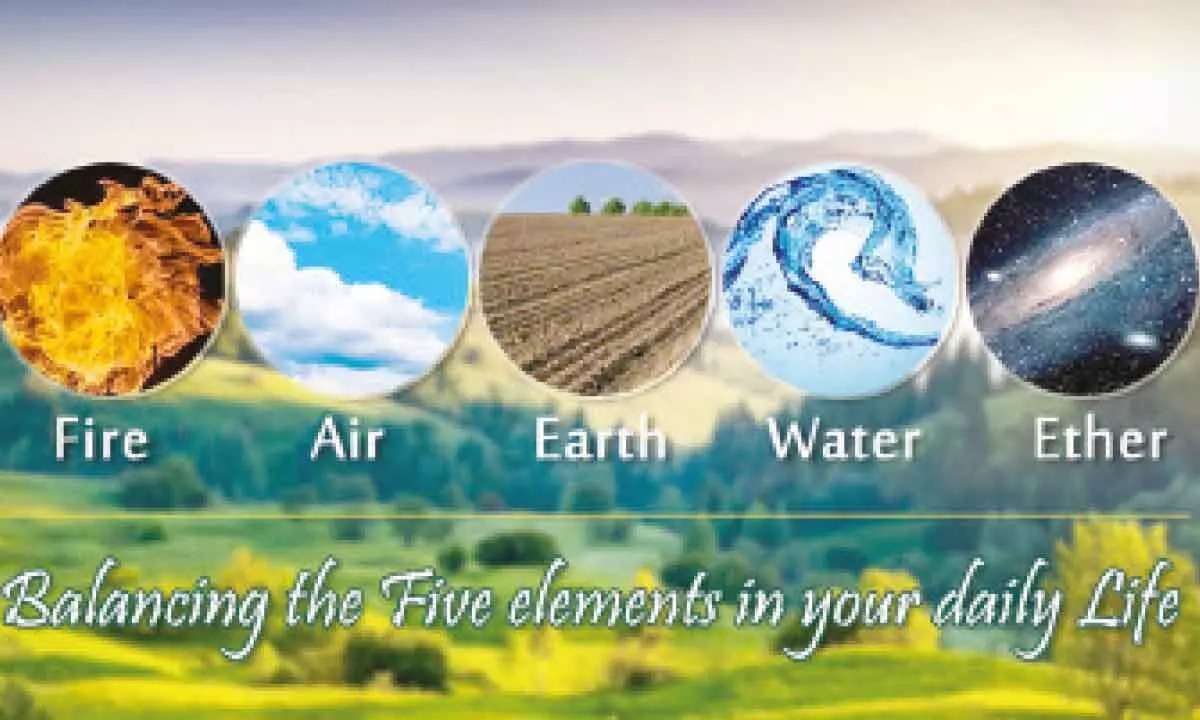Live
- Priyanka will now be seen in Wayanad more often: Robert Vadra
- Cong won all 3 seats on basis of guarantees, development: Dy CM on K’taka bypolls
- Santosh Trophy: Odisha rout Chhattisgarh to make final rounds
- BJP hijacked electoral machinery for securing victory in Maharashtra: Cong
- Formula 1: Russell pips Sainz to take pole in Las Vegas GP
- India under Trump 2.0 could bolster its position in global supply chains
- People voted for ideology, rejected dynasty: Sudhanshu Trivedi on Maha victory
- AP, Telangana to receive rains for next three days as low pressure to turn depression
- Kailash Gahlot inducted into BJP’s Delhi election panel
- With state elections over, Indian stock market heads for stability
Just In

Experts believe that human activity is the primary cause of the increase of CO2 emission of such magnitude – an increase of 50 per cent since the Industrial Revolution. We have no other planet to go to, no matter how many alien ships we see suggesting lives outside Earth. If we seriously want mother earth to protect all of us from elimination of our species, we had better protect mother earth from extinction
In our Vedas, the Atharvaveda the three coverings of our surroundings are referred as Chandamsi. The Atharvaveda says, wisely utilize three elements on earth -- water, air and plants or herbs. Not just earth, human life is also made of five-elements – earth (prithvi), water (jala), fire (tejas), wind (vayu) and space (akasha). Protecting these five elements would protect our planet as well as human life, or else, the extension is evident.
To breathe or not to breathe, but the fact is, every breath that we inhale and exhale is now being counted as adding to global warming. Enough evidence supports that even the CO2 emission through breathing of 8 billion people around the world is now being accounted for. In one day, an average person breathes out around 500 litres of the greenhouse gas CO2 -- which amounts to around 1kg in mass. The question is, what happens when the population reaches an estimated figure of 9.7 billion by 2050?
Currently, the Earth is already about 1.1 degree Celsius warmer than it was in the late 1800s, and emissions continue to rise. In November 2-21, at the 26th Conference of Parties (COP) to the United Nations Framework Convention on Climate Change (UNFCCC), the Prime Minister Narendra Modi also pledged that India would cut its emissions to net zero by 2070.
No surprises, the current global average concentration of CO2 in the atmosphere is 421 ppm as of mid-2022, which is an increase of 50 per cent since the Industrial Revolution began. Experts believe that human activity is the primary cause of the increase of CO2 emission of such magnitude. Since the start of the industrial revolution, human emissions of carbon dioxide from fossil fuels, etc., have risen to more than 35 billion metric tons per year.
The majority of emissions is coming from transportation – 28 per cent of 2021 greenhouse gas emissions. The transportation sector generates the largest share of greenhouse gas emissions and it primarily comes from burning fossil fuel for our cars, trucks, ships, trains, and planes.
Between 1990 and 2021, the warming effect on our climate – known as radiative forcing – by long-lived greenhouse gases rose by nearly 50 per cent, with carbon dioxide accounting for about 80 per cent of this increase. Despite the decline in 2020, global energy-related CO2 emissions remained at 31.5 Gt, which contributed to CO2 reaching its highest ever average annual concentration in the atmosphere of 412.5 parts per million in 2020 – around 50 per cent higher than when the industrial revolution began.
The oceans absorb much of this increased heat, with the top 100 meters (about 328 feet) of ocean showing warming of more than 0.6 degrees Fahrenheit (0.33 degree Celsius) since 1969. Global sea level rose about 8 inches (20 centimetres) in the last 100 years, and the last two decades have been worse. For the record, our planet stores 90 per cent of the extra energy in the ocean.
There is much other evidence as well. Earth's average surface temperature has risen about 2 degrees Fahrenheit (1 degree Celsius) since the late 19th century, a change attributed to emission of carbon dioxide and human activities.
The glaciers are retreating almost everywhere around the world. Sprint snow cover in the Northern Hemisphere has decreased over the past 50 years and the show continues to melt earlier. You can blame any country that you want – as of 2020, China is the largest emitter of carbon dioxide gas in the world, with 10,668 million metric tons emitted. The US is the second-largest emitter of CO2, with 4,713 million metric tons of total carbon dioxide emissions. India too is in the list of top three, with 2,442 million metric tons of total carbon dioxide emissions. Russia is the fourth-largest contributor, emitting 1,577 million metric tons, and Japan is the fifth-largest producer of CO2 emissions, with 1,577 million metric tons. No wonder, the years 2016 to 2020 are attributed as the warmest year on record.
While Earth's climate has changed throughout its history, the current warming is happening at a rate not seen in the past 10,000 years. If every problem has a solution, and the solution lies in the roots of the problems -- we all know what to do and what not to do. We have no other planet to go to, no matter how many alien ships we see suggesting lives outside Earth. If we seriously want mother earth to protect all of us from elimination of our species, we had better protect mother earth from extinction.

© 2024 Hyderabad Media House Limited/The Hans India. All rights reserved. Powered by hocalwire.com







